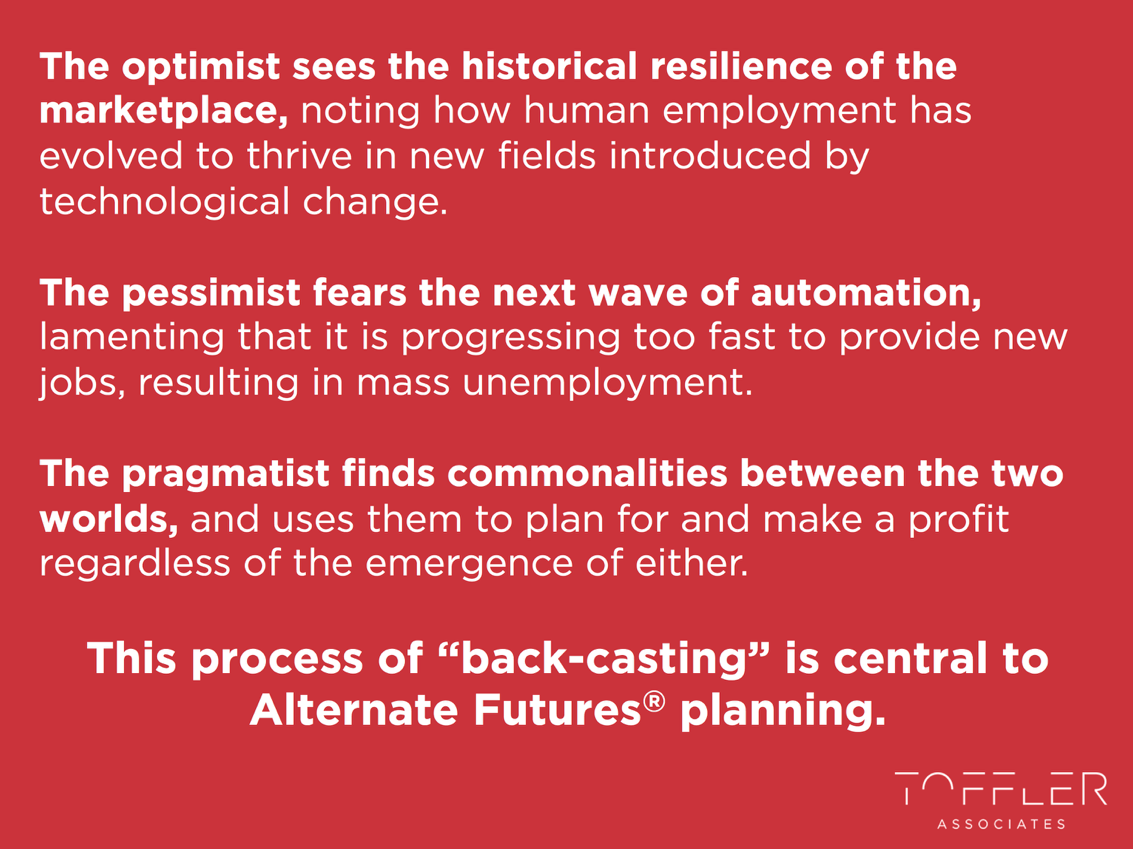Do people still matter in a post-automated world?

Telephones came into existence in the late 19th Century. Along with the innovation came the establishment of new businesses, each focused on providing this new communication capability to the marketplace. And along with those emergent organizations came hundreds of thousands of new jobs for switchboard operators who would connect incoming calls to a final destination. The overwhelming rise in market saturation of telephones and resulting call activity outpaced the capacity of human workers to connect the calls well into the 20th Century. Automatic switching equipment emerged as a solution – and ultimately replaced the workforce entirely.
Fast forward another century. Judging by overwhelmingly negative coverage about job displacement caused by automation, it would appear we are facing an unprecedented workforce crisis. On a seemingly daily basis, we hear about faster technologies, more capable of replacing human jobs.
People are advancing at a comparably glacial pace. While on the surface, this desynchronized rate of change seems like a threat to the workforce, there’s a silver lining. The relatively slow rate of change of human nature is an opportunity to find historical analogies that could guide how modern businesses can plan for and adapt to a changing operating environment.
Hiring for the Next Era
In this environment, one of the most important things a company can do is focus on how they are hiring and building a workforce capable of competing in the future.
 In July 2016, McKinsey & Co released a paper in Fortune Magazine outlining the jobs most likely to be automated and those most likely to continue to need human labor. Similar to a 1999 Future of Work report released by the Department of Labor, McKinsey predicted the loss or replacement of manual jobs and activities. On the other hand, jobs that demand a distinctly human touch – like management, decision-making, and design/creative work, would remain in high demand. Even those jobs would have some parts of the role complemented by some form of automation.
In July 2016, McKinsey & Co released a paper in Fortune Magazine outlining the jobs most likely to be automated and those most likely to continue to need human labor. Similar to a 1999 Future of Work report released by the Department of Labor, McKinsey predicted the loss or replacement of manual jobs and activities. On the other hand, jobs that demand a distinctly human touch – like management, decision-making, and design/creative work, would remain in high demand. Even those jobs would have some parts of the role complemented by some form of automation.
In this scenario, we again come full circle – these machines are becoming cheaper and infiltrating smaller businesses and more positions. As demand for automation increases, producers expand supply, and the marginal cost and price of machines drops, automation will become prevalent in areas of business where it historically has been too expensive to engage.
The corollary is that the value of the fundamentally ‘human’ jobs is rising. These less replaceable jobs are where competition (and profits) will lie in the coming years. Enabled by the same general access to technology resources, people will have a relatively equal footing from which to increase both their capacity for learning and knowledge transfer and their own individual knowledge. It’s in how they translate those information assets into productivity and output that we’ll see the competitive advantages emerge.
Invest in People
Almost regardless of industry, success is increasingly dependent on how well a business can connect with its consumers. Apple is a great example – they strive to relate with their users through human-centered design, story, emotion, lifestyle, and experience. Those companies and professionals who can continue to connect with customers and nurture lasting relationships with their products or brand as they evolve at the pace of modern technology will be the ones that will compete and last.
And the answer to that challenge is in the human workforce. Business leaders facing automation decisions and automated competition would do well to be as attuned to sustaining a future-focused human capital plan.
Be cognizant that there is a world of innovation to come after automation has infused how we work and live. If you haven’t already, begin to invest now in the people and skills that likely will remain central to your business and industry. Looking forward, this strategy will position your organization to be better prepared to function in a post-automation future. In the immediate timeframe, it will help you secure a competitive advantage in a fiercely competitive environment.
Consider your future workforce as an investment. Right now the interest rate is low. The right people needed for the future are entering the workforce now, but competition is not yet so high as to demand urgency, and change is still very much in process. You have the opportunity in the present to lean on the slower side of change, the human of this shifting environment, and train the individuals who will become your greatest assets in the coming years. And like any safe, reliable investment, while it may take some time to see the decision play out, you ultimately will end up with a stronger foundation.
It’s time to turn to an advisor that can help you develop a pragmatic balance between technology and the workforce so you can engage a human capital model capable of competing in the future.
{{cta(‘d48e984c-b395-48c1-9fb9-a77f50008b10’)}}

 About the Authors
About the Authors